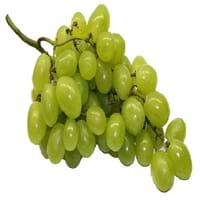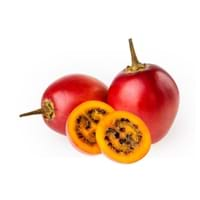Health Benefits
Cancer prevention, Kidney stone treatment, Prevents constipation, Treatment of alzheimer's disease
Cancer prevention, Improves eye vision, Prevents diabetes, Prevents high blood pressure
General Benefits
Digestive aid, Improves eye vision, Maintains healthy cholesterol level, Treatment of migraine
Cures inflamed tonsils, Helps in weight loss, Maintains healthy cholesterol level
Skin Benefits
Anti-aging benefits, Heals sunburn, Skin rejuvenation, Treatment of dark spots
Anti-aging benefits, Protects skin from oxidative stress
Hair Benefits
Prevents hair loss, Regulates hair growth, Treatment of dandruff
Protects hair
Allergy Symptoms
Anaphylaxis, Asthma, Breathing difficulty, Coughing, Drop in blood pressure, Hives, Skin rash, Stuffy nose, Swelling of mouth, tongue or lips, Wheezing
Anaphylaxis, Coughing, Diarrhea, Eczema, Hives, Itching sensation in throat, Nausea, Skin Rashes, Runny nose, Sneezing, Swelling of mouth, tongue or lips, Vomiting, Wheezing
Side Effects
Allergic reaction, Skin rash, Might slow down the process of blood clotting
Heart burn
Best Time to Eat
As a snack in the late afternoon, Don't consume at night and before bed, Eat the fresh ones, avoid mixing with any other foods, don't eat after meal., Morning time (before lunch)
Along with meal, As a snack in the late afternoon, Don't consume at night and before bed, Don't eat after meal, Morning time (before lunch)
Vitamin B5 (Pantothenic Acid)
Vitamin C (Ascorbic Acid)
Vitamin K (Phyllochinone)
Calories in Fresh Fruit with Peel
Not Available
Calories in Fresh Fruit without Peel
Not Available
Calories in Frozen Form
Not Available
Type
Berry
Fruit vegetable
Season
Autumn, Summer
All seasons
Varieties
Cabernet Sauvignon, Merlot, Pinot Noir, Syrah/Shiraz and Zinfandel
Tamarillo bold gold, Tamarillo red beau, Tamarillo tango and Tamarillo teds red
Color
Green, Red
Orange, Red, Yellow
Inside Color
Light Green
Creamy Yellow
Taste
Sweet-Sour
Tangy, Tart
Origin
Western Asia, Central Europe
South Africa
Soil Type
Clay loam, Sandy loam
Sandy loam, Well-drained
Climatic Conditions
Warm
Rainfall, Warm
Facts about
- If left alone, a grapevine can spread 50 feet and even more.
- There are more than 8,000 varieties of grape worldwide.
- They are available in 7 different colors: red, green, white, black, purple, blue and golden.
- Up until 1967, tamarillos were referred to as tree tomatoes.
- The name tamarillo is derived from Maori word 'tama' which means leadership and rillo from spanish word 'amarillo' which means yellow.
Top Producer
Spain
New Zealand
Other Countries
Argentina, Armenia, Australia, Chile, France, Iran, Italy, Portugal, Romania, Turkey, United States of America
Australia, Chile, Colombia, Malaysia, Peru, Philippines
Top Importer
United States of America
United States of America
Top Exporter
Chile
New Zealand
Botanical Name
Vitis vinifera
Solanum betaceum
Synonym
Not Available
tree tomato, genus Cyphomandra, Cyphomandra
Subkingdom
Tracheobionta
Tracheobionta
Division
Magnoliophyta
Magnoliophyta
Class
Magnoliopsida
Magnoliopsida
Subclass
Rosidae
Asteridae
Family
Vitaceae
Solanaceae
Species
Vitis vinifera
Solanum betaceum
Generic Group
Grape
Nightshade
Difference Between Grape and Tamarillo
We might think that Grape and Tamarillo are similar with respect to nutritional value and health benefits. But the nutrient content of both fruits is different. Grape and Tamarillo Facts such as their taste, shape, color, and size are also distinct. The difference between Grape and Tamarillo is explained here.
The amount of calories in 100 gm of fresh Grape and Tamarillo with peel is 69.00 kcal and Not Available and the amount of calories without peel is Not Available and 31.00 kcal respectively. Thus, Grape and Tamarillo belong to Low Calorie Fruits and Low Calorie Fruits category.These fruits might or might not differ with respect to their scientific classification. The order of Grape and Tamarillo is Vitales and Solanales respectively. Grape belongs to Vitaceae family and Tamarillo belongs to Solanaceae family. Grape belongs to Vitis genus of Vitis vinifera species and Tamarillo belongs to Solanum genus of Solanum betaceum species. Beings plants, both fruits belong to Plantae Kingdom.









